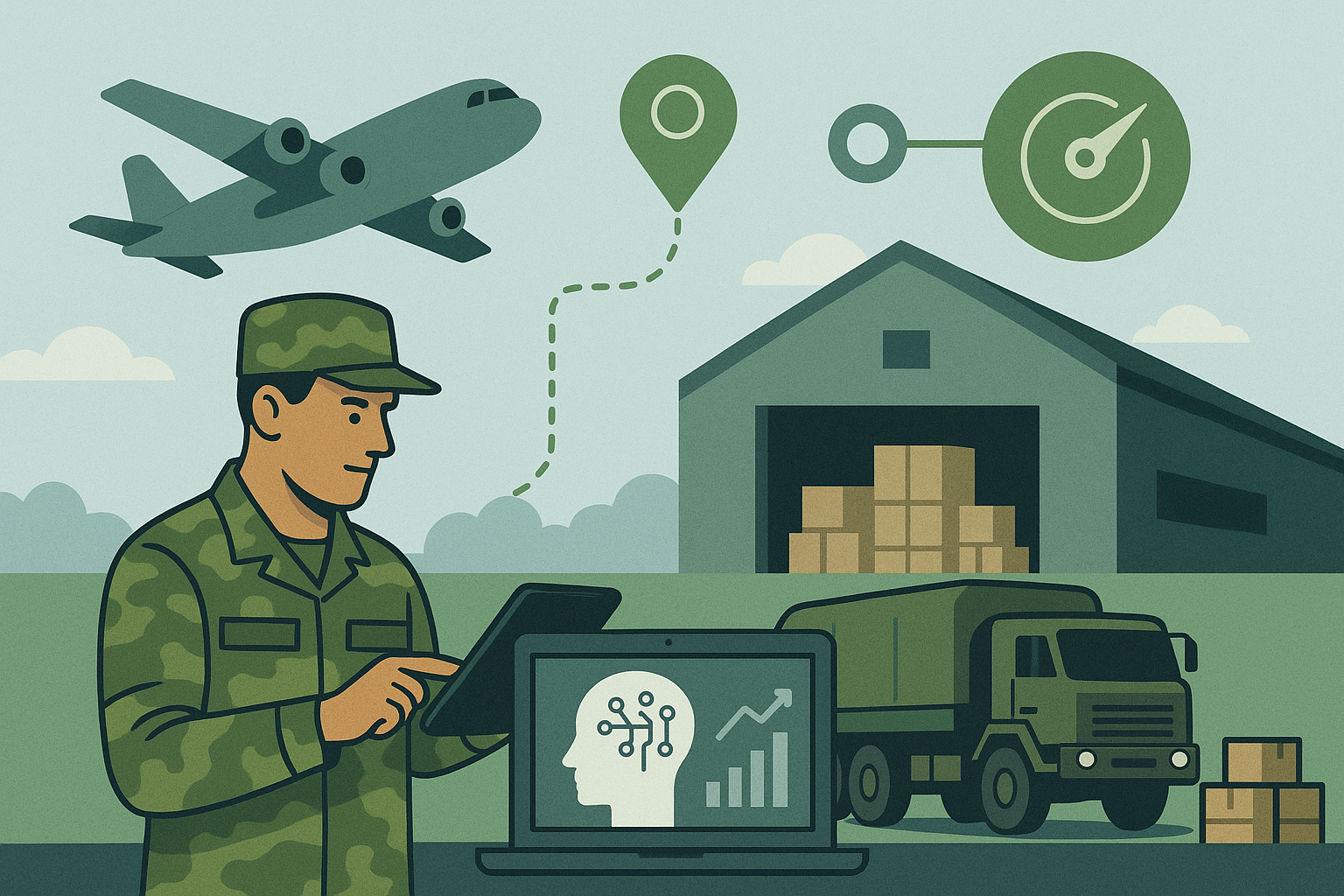Smarter, Faster, Leaner: How Machine Learning is Reshaping Defense Logistics

Military logistics is a high-stakes balancing act. Get it wrong, and critical supplies show up late—or not at all. Traditionally, planners have leaned on historical data and rigid forecasting models to keep supply chains moving. But with global operations becoming faster and more unpredictable, that playbook is starting to show its age. Enter machine learning.
Across the defense ecosystem, there's growing momentum around using machine learning (ML) to improve how materials are planned, sourced, and delivered. A recent internal initiative by the Defense Logistics Agency (DLA) even outlined a bold new approach to supply planning—one that swaps static spreadsheets for dynamic, data-driven forecasting.
But this shift isn't just theoretical. It's happening now—and it could transform how military suppliers operate in the next 3–5 years. Let’s explore what this shift looks like—and how it could affect everyone from federal planners to the businesses that serve them.
Why Traditional Planning No Longer Cuts It
For decades, military logistics planning has operated on a simple premise: if it worked last year, it’ll probably work this year too. Forecasts were based on static models—historical data, demand averages, and supply chain cycles that assumed a certain level of stability.
But modern defense operations are anything but stable. Supply chains today have to account for:
- Volatile geopolitical situations
- Complex multi-theater operations
- Rapidly changing mission requirements
- And a surge in the volume and variety of data being collected
What worked before now creates delays, overages, or worse—supply gaps that impact readiness. The challenge isn’t just having the right items in stock; it’s having them in the right place, at the right time, without overcommitting resources.
That’s where machine learning steps in.
How Machine Learning Can Flip the Script
Machine learning (ML) isn’t about replacing humans—it’s about giving them better tools. ML algorithms can analyze massive amounts of data from across the supply chain—inventory levels, usage trends, mission data, shipping times, vendor performance—and use that insight to make smarter predictions.
Here’s what that actually means in a logistics context:
- Predictive planning: Instead of waiting for orders to come in, ML models can forecast future needs based on real-world variables—not just what happened last quarter.
- Smarter sourcing: By learning which suppliers deliver consistently (and which don’t), the system can recommend better procurement strategies.
- Real-time adjustments: When conditions change—say, a port shuts down or a component becomes scarce—the system can rapidly re-optimize plans on the fly.
- Balanced decision-making: ML helps planners move beyond reactive, single-metric decisions (like cost or speed alone) to a more strategic mix of readiness, efficiency, and risk.
To read the full DLA white paper that sparked these insights, visit: 👉 Machine Learning Has Potential to Revolutionize Agency’s Planning Processes
Built-In Benefits—If the Data Is Right
Machine learning only works if the data feeding it is complete, consistent, and accessible. That’s why modernizing logistics isn’t just about software—it’s about breaking down silos. For ML to reach its potential, agencies must invest in:
- Data sharing across functions and systems
- Cloud-based infrastructure for scalability
- Cybersecure pipelines that protect sensitive intel
When done right, this sets the stage for a logistics system that’s truly agile—and ready for whatever comes next.
The Human Side of Smarter Logistics
Technology is only half the battle. Even the most advanced machine learning system won’t make a difference if the organization behind it isn’t ready to change.
Successful adoption of ML in logistics planning requires:
- Trust in the tech — decision-makers must understand and rely on machine-generated insights.
- Training — personnel need to know how to interpret ML outputs and act on them confidently.
- A shift in mindset — from reactive to predictive, from gut instinct to data-backed choices.
It’s a cultural pivot. But one that puts the entire supply chain in a stronger, more resilient position to support the warfighter in any scenario.
AI Isn’t Just for the DLA — It’s in Your Hands, Too
At DefenseSupply.net, we’re not just watching the AI wave—we’re riding it.
Our platform leverages Artificial Intelligence to help you search, sort, and stay ahead of DLA opportunities. Every day, our system scans the latest DLA solicitations and extracts key information—NSNs, part numbers, quantities, procurement history, and more—to give you the intel you need to win new contracts.
It’s like having your own digital analyst working around the clock to help you target the right opportunities faster and more effectively.
Whether you're a seasoned defense contractor or just starting out, we’re building the tools that give you an edge in a more competitive and data-driven marketplace.
Final Thoughts
The future of defense logistics is smarter, faster, and more adaptive—and machine learning is one of the key drivers making that future a reality. From streamlining planning to strengthening readiness, ML offers a real solution to the complexity of modern supply chains.
And while agencies like the DLA are laying the groundwork, businesses like yours can tap into the same tech-driven momentum today—with the right tools and the right insights.
Want to see how AI can give you an edge in defense contracting? 👉 Visit DefenseSupply.net and explore how we're making military procurement smarter, one RFQ at a time.